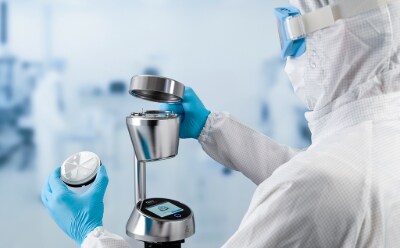Viable Air Monitoring

Microbial air monitoring is the process of sampling and analyzing microbial contamination in the air. It is an important step in quality control of manufacturers in the pharmaceutical, cosmetics, food and beverage industries. Air quality plays a critical role in aseptic environments, cleanrooms and production areas, where microorganisms in the air are a potential risk for cross-contamination of raw materials and final products.
Featured Categories
Discover advanced environmental monitoring and aseptic process simulation solutions for pharmaceutical manufacturing. Ensure GMP compliance with our specialized tools and media for cleanrooms, isolators, and RABS.
Hygiene monitoring ensures sanitization effectiveness with ATP testing, protein testing, or swab sampling for food safety and microbiology.
Active Microbial Air Monitoring
The need for efficient active air monitoring is growing, as regulations and standards for pharmaceutical, food, and beverage products are increasing. In these industries the quality of the production environments is directly linked to the finished products’ quality. Active air monitoring determines the number of viable organisms per cubic meter of air, and is part of continuous routine testing during the manufacturing process.
Microbial air samplers actively impact microorganisms onto the agar surface of a culture medium, which is then incubated, and the results are analyzed by enumerating the microorganisms that have grown on the culture medium. If the test result is positive for presence of microbial contamination in the air, especially in critical areas, it is followed by an identification test to determine the genus of the microorganism.
Passive Microbial Air Monitoring
Passive air sampling is an important complement to active air monitoring methods. This method is used to measure the levels of contamination that have dropped from the air onto surfaces. Settle plates (also known as sedimentation plates or settling plates) allow for continuous, semi-quantitative determination of microbial contamination in the air.
Settle plates are placed openly in the test area for a specific period of time, allowing microorganisms to drop from the air and grow on the culture media. To enhance microbial growth, the media plate is placed in an incubator that provides optimal growth conditions. After a specified period of time, the cultures grown are enumerated and if needed identified using an identification test.
Visit our document search for data sheets, certificates and technical documentation.
Related Articles
- Read what to consider when you are planning to buy a new active microbial air sampler (bio-impactor) for environmental monitoring in your pharmaceutical manufacturing facility.
- Explore our range of contact plates and swabs for microbiological testing. Ideal for environmental monitoring in cleanrooms and controlled areas, our products ensure reliable surface and personnel testing to minimize contamination risks.
- Discover the importance of data integrity in environmental monitoring. Learn how digital management systems can enhance compliance, safety, and efficiency in data handling.
- Microbial monitoring; environmental monitoring; interim storage; ICR contact plates; contact plates; TSA w. LTHThio Contact ICR+
- IsoBag® ease the environmental monitoring workflow in aseptic production isolator
- See All (4)
Find More Articles and Protocols
How Can We Help
In case of any questions, please submit a customer support request
or talk to our customer service team:
Email custserv@sial.com
or call +1 (800) 244-1173
Additional Support
- Chromatogram Search
Use the Chromatogram Search to identify unknown compounds in your sample.
- Calculators & Apps
Web Toolbox - science research tools and resources for analytical chemistry, life science, chemical synthesis and materials science.
- Customer Support Request
Customer support including help with orders, products, accounts, and website technical issues.
- FAQ
Explore our Frequently Asked Questions for answers to commonly asked questions about our products and services.
To continue reading please sign in or create an account.
Don't Have An Account?

